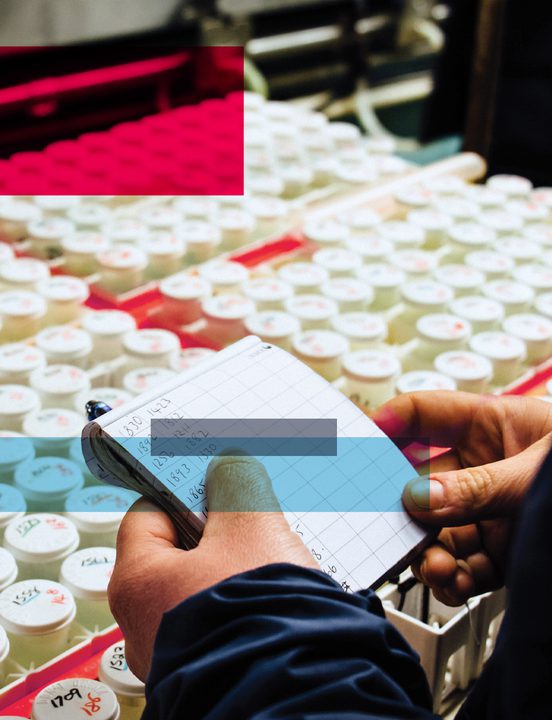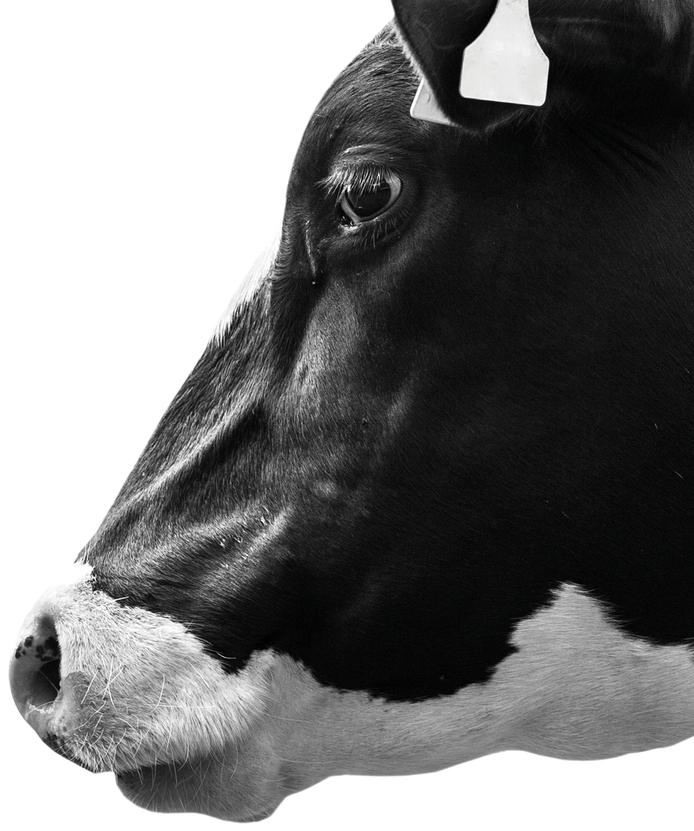Milk Pregnancy Testing
learn more
What is Milk Pregnancy Testing?
A highly reliable test to detect Pregnancy Associated Glycoproteins (PAGs) to accurately determine whether or not the cow is pregnant.
The test result does depend on accurate animal identification, good milk sampling technique and up-to-date fertility information. This means with the automated options, the correct samples can be selected and tested in the laboratory.
What Are The Benefits?
- Accurate pregnancy results – specificity and sensitivity figures indicate a very low 2% inaccuracy rate.
- Can be used as a recheck test 70-110 days after service to confirm pregnancy status after an early vet PD.
- Reduces days open, saving between £4.00-£5.50 (Kingshay/Kite Consulting) per day
- No enrolment fee, no minimum or maximum number of samples and no commitment to monthly Milk Pregnancy Testing.
- 99% accuracy on pregnant cows*, milk samples can be tested to check for pregnancy status and identify open (non-pregnant) cows in time to rebreed. * IDEXX validation report of the test carried out on 1,839 samples of milk.
How Does It Work?
- Using existing NMR samples – there is no need for additional samples.
- Ad hoc testing between recordings is available.
- The test can be used at any time from 28 days after service and as a check before drying off.
- Results shown in Herd Companion will automatically update a cow’s fertility status and associated action lists (Milk Recorded herds only).
- Cows falling into the ‘recheck’ area will be retested automatically at next recording free of charge (Milk Recording customers only).
Frequently Asked Questions
The tests are 94.4% (1) specific (over 28 days from service) and 98.7% (2) sensitive.
(1) and (2) IDEXX Milk Pregnancy Test Validation Report
No. The existing NMR sample can be used, reducing cost and hassle in the milking parlour.
At NMR recordings, ask the Milk Recorder to:
- Manually select the animals you want to get PD based on a list you provide; or
- Use the auto-select system – two options are available, days after calving and/or days after service.
Discuss with your vet which would be most suitable. Once set, they can be automatically used again the month after.
Yes. Sample boxes are available for this purpose, containing all the required paperwork and free postage. Contact Customer Services for more details.
The Milk Recorder has the required software; there are two options:
- Manual: provide a list to the Milk Recorder of the cows you want to put forward for a pregnancy test, and they will select the animals for you. Check that the cow has been served for at least 28 days.
- Auto Select: here you can ask the Milk Recorder to go for Days after Calving and / or Days after service. You can choose the criteria, e.g. 150 days after calving or 70 days after service.
Whatever option you choose, the Milk Recorder will be able to tell you how many animals have been selected, and if you wish to revise the list (removing animals if required), that is part of the service.
The PAG levels change as the pregnancy progresses. From 0-28 days after the last service, the PAG level is too low to register. Under the auto-select options, animals will not be picked for testing.
Between day 29 and 60 days after service, the PAG level rises, but from day 60 - 80, it can drop slightly. By 80 days after service, the PAG levels rise continually to the next calving.
If an animal loses its calf (abortion etc), PAG levels continue to be shed for some time, depending on the stage of gestation, after the event.
From 0-60 days from calving, PAG's are still being produced by the last pregnancy. On the auto-select service option, cows will not be chosen for testing if they are in this range.
Where PAG levels are below 1.00, but the sample was taken after 150 days gestation, the animal should be retested or a manual PD performed by a vet. The drop in PAG could be due to the cow losing its calf.
Cows with a PAG level of less than 0.10 are shown as not pregnant (open). From 0.10 and 0.25, the result is inconclusive, and a retest is provided FOC. Above 0.25, the result is shown as positive.
Yes, if you use other ad hoc testing services from NMR, e.g. Essential Sampling, download the sample submission form from this website – found in my NMR, and add it to the sample box with your other paperwork, letting us know which samples to test for PD. No additional samples are required.
The software used by the Milk Recorder will let you know how many animals have been selected at the end of the recording.
We recommend you allocate some time with the NMR Area Field Manager to ensure that as much fertility data is recorded (Service and PD information), so that animals are not tested in error. We also encourage you to work with your vet to determine your herd's optimum fertility management programme.
No, the test only shows that the animal is pregnant, it does not indicate the stage of gestation. If an animal has been served several times, you must decide which service date to use and schedule the correct drying off date.
Poor quality samples may compromise the accuracy of the test result. Ensure the animal is correctly identified and milk carryover between samples is minimized (milk recording jars should be completely emptied between cows); long milk tubes need to be cleaned between animals.
No, this is seen as an additional check, backing up what happens already on-farm. It is a useful way to help identify animals that might have reabsorbed the embryo after being confirmed in calf (currently, 7-10% of animals will do so before 100 days from service).
Yes, PAG's will circulate in milk for a certain period. Research shows up to 7 days after early embryonic death and longer after an abortion later in gestation, or up to 15 days, as the animal reaches 200 days gestation.
No service is 100% accurate. Specificity and sensitivity figures indicate a very low (2%) inaccuracy rate comparable with rectal palpation. Animals can also suffer embryonic loss after a positive PD result (around 7%).
The results are displayed in NMR's Herd Companion software in the iReports under Breeding and Fertility. There are two reports, one showing the pregnancy test results and the other showing each animal's pregnancy status. The milk pregnancy results are added to the NMR records by our processing office as soon as the results are available, as long as there is an appropriate service date to apply the PD to. If there is no service date, you will be asked the next month to provide one so that we can apply the PD to that.

